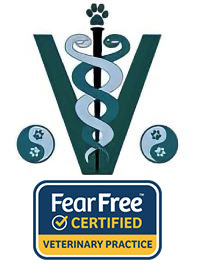Library
-
The Staffordshire Bull Terrier loves his family with a passion, especially the juvenile members - this breed's devotion to children is legendary.
-
What makes the Standard Schnauzer so compelling? Maybe it is the distinctive beard and mustache supporting the long muzzle that captures our attention, or those eyes that seem to be scrutinizing with an insatiable curiosity and perhaps even skepticism.
-
Stanozolol is given by mouth and is used off label to treat poor appetite, anemia, tracheal collapse, and other conditions. Give as directed by your veterinarian. Side effects may include behavior changes, limb swelling, or prevention of heat cycles. Do not use in pets that are allergic to it, are pregnant, breeding, or nursing. Pregnant women should NOT handle this medication. If a negative reaction occurs, please call your veterinary office.
-
Staph (or staphylococcal) dermatitis is an inflammatory skin condition that the skin caused by a group of bacteria called Staphylococcus. Any disorder that causes itching or a change in the skin’s environment can create the ideal conditions to allow Staphylococcus to become a problem. This handout discusses Staphylococcus dermatitis in dogs, as well as a hypersensitivity (allergic) reaction to this bacteria. The clinical signs of these conditions, along with diagnosis, treatment, and prognosis, are outlined.
-
Stem cells are unspecialized cells that are capable of renewing themselves though cell division. Under certain conditions, they can become a specific tissue or organ cell. Stem cell therapy commonly refers to the process of placing stem cells from the body into diseased or damaged tissues, such as a torn ligament in the knee or perhaps an arthritic joint. This process is often referred to as regenerative medicine. Adult stem cells are capable of repair and regeneration of various tissues because they have the potential to differentiate into specialized cells of an organ. The most common use of stem cell therapies has been in the treatment of osteoarthritis in dogs and cats. Currently, there are no current guidelines with respect to stem cell therapy. Stem therapy should only be performed by a veterinarian with special training, who understands the benefits and limits of this therapy. It is important to have realistic expectations as positive outcomes cannot be guaranteed.
-
This handout discusses the use of corticosteroid (such as prednisone or dexamethasone) in the cat. Reasons for their use as well as the common short-term and long-term side effects of these drugs are outlined, along with strategies to avoid these effects.
-
This handout discusses the use of corticosteroid (such as prednisone or dexamethasone) in the dog. Reasons for use as well as the common short-term and long-term side effects of these drugs are outlined, along with strategies to avoid these effects.
-
Stomach tumors are uncommon in dogs and cats. There are many kinds, including leiomyosarcomas, lymphomas, adenocarcinomas, mast cell tumors, fibrosarcomas, plasmacytomas, gastrointestinal stromal tumors (GISTs), and carcinoids (all malignant); and leiomyomas, adenomatous polyps, and adenomas (benign). Most tumors are malignant. Stomach tumors are more prevalent in older animals, males, and certain breeds. The signs of stomach tumors include chronic vomiting, inappetence, lethargy, and weight loss. Sometimes tumor ulceration will cause anemia. Paraneoplastic syndromes are possible with the muscle tumors. Stomach tumors may be diagnosed with imaging, endoscopy, or surgery, with a biopsy. Treatment may involve surgery, chemotherapy, or radiation therapy.
-
Strokes are rare in cats. Some causes include a blood clot such as a thrombus or embolus that lodges in a cerebral blood vessel, cerebral bleeding from trauma, or a blood clotting disorder; however, the cause is often unknown. Signs of a stroke are variable depending on the regions of the brain affected and the degree and duration of blood and oxygen deprivation. Magnetic resonance imaging is the ideal diagnostic test for diagnosing a stroke. Treatment is complex and there is no guarantee of complete success. Your veterinarian will help you assess progress and plan remedial action.
-
Strokes are rare in dogs. Some causes include a blood clot such as a thrombus or embolus that lodges in a cerebral blood vessel, cerebral bleeding from trauma, or a blood clotting disorder; however, the cause is often unknown. Signs of a stroke are variable depending on the regions of the brain affected and the degree and duration of blood and oxygen deprivation. Magnetic resonance imaging is the ideal diagnostic test for diagnosing a stroke. Treatment is complex and there is no guarantee of complete success. Your veterinarian will help you assess progress and plan remedial action.


